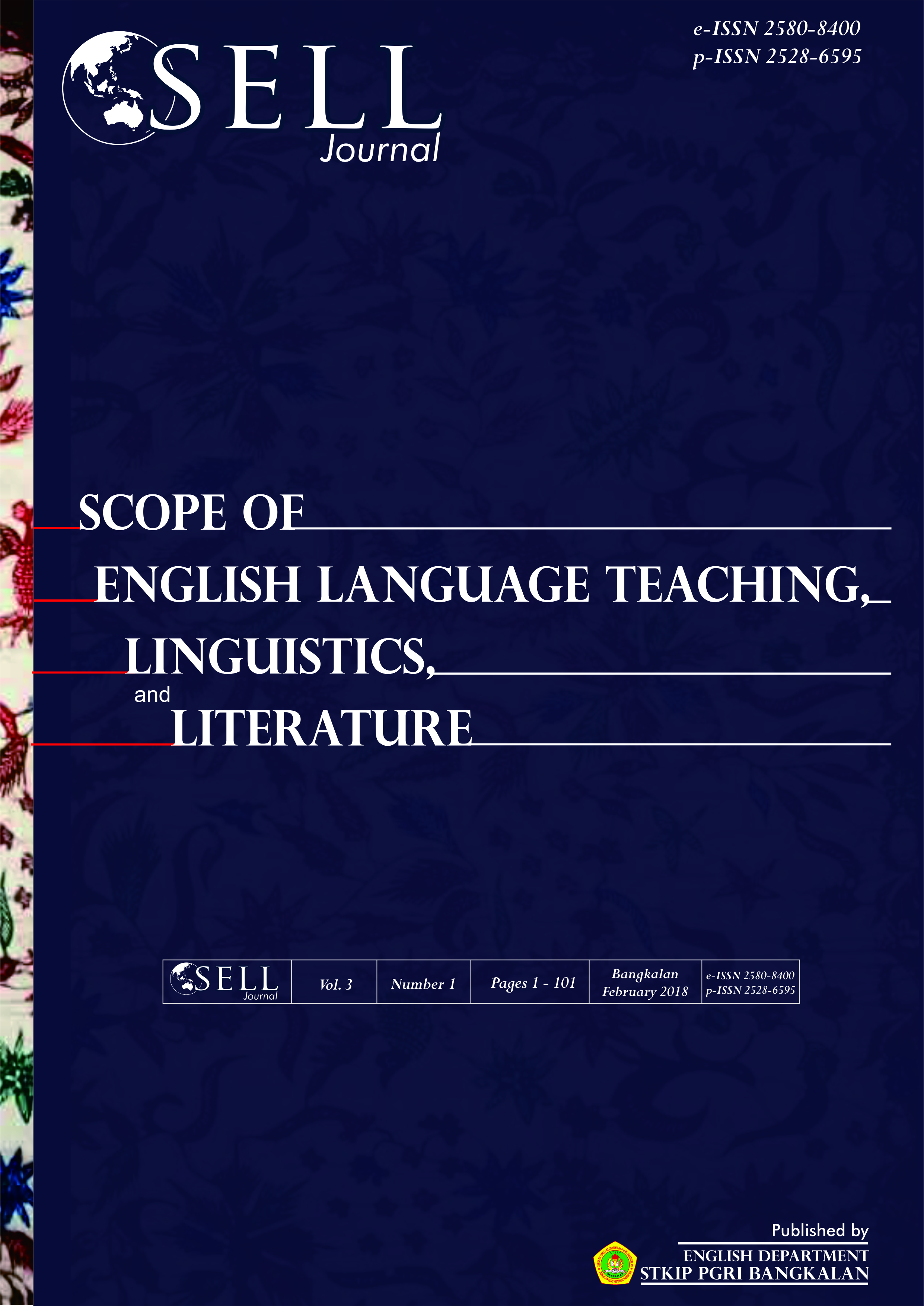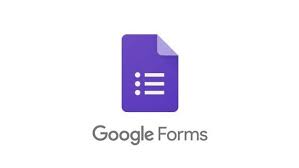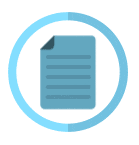The Implementation of Remedial Teaching in Assisting Second Language Learner
DOI:
https://doi.org/10.31597/sl.v3i1.537Keywords:
implementation, remedial teaching, second language learnerAbstract
Many students get a low achievement in their learning. One of the suggested ways in overcoming the students’ problems is remedial teaching. Contrary to the procedure, remedial teaching was mostly done perfunctorily. This study was generally aimed to find out how teachers apply the remedial teaching in class. Specifically, this study was aimed to find out how teachers identifying students who need to be given remedial teaching, how teachers find the students difficulties in their learning process and how teachers devise strategies to overcome the students’ problems. In this study the researcher gathered data on the implementation of remedial teaching in senior high school. The focus of the study was the implementation of remedial teaching on English lesson on the students of SMAN 3 Bangkalan only. A qualitative research design was proposed to obtain answers to research questions of this study. The study that the researcher chose was case study. The subject of this research was English teachers of the Tenth Grade Students of SMAN 3 Bangkalan. To collect data the researcher did observation, interview and documents gathering. The research finding was the implementation of remedial teaching in SMAN 3 Bangkalan was quite good, but it was not too much well done. English teachers of SMAN 3 Bangkalan did the remedial teaching by analyzing the students’ score, analyzing the students’ disabilities and curing the students’ disabilities. But the enrichment program had not conducted yet. They did the all steps of the remedial teaching but there were several that they ignored. It was done unmaximally. And there was lack of teachers’ role. Nevertheless, the implementation of remedial teaching in SMAN 3 Bangkalan was not done too much perfunctorily. It could be said that it was had only a few methodological flaws
References
Rosdakarya.
Ary, Donald., Jacobs, Lucy Cheser., & Razaviech, Azgar. 2002. Introduction to Research
in Education. USA: Wadsworth Group.
Bogdan, Robert C. & Biklen, Sari Knopp. 1992. Qualitative Research for Education: An
Introduction to Theory and Methods. Boston: Allyn and Bacon
Direktorat Pembinaan SMA. 2010. Juknis Pembelajaran Tuntas, Remedial, dan Pengayaan
di SMA. Docstoc.com.
Kumar, Ranjit. 1999. Research Methodology. London: Sage Publications.
Makokha, Asman. A 14 Days Teaching Methodology Course. Infocollections.org.
McMillan, James H. 1992. Educational Research: Fundamentals for the Consumer. New
York: Harper Collins Publisher.
Marwaha, Prabhat. 2005. Role of Remedial Teaching. Articlebase.com.
Muchtar & Rusmini. 2001. Pengajaran Remedial: Teori dan Penerapannya dalam
Pembelajaran. Jakarta: Nimas Multima.
Moleong, Lexy J. 2012. Metodologi Penelitian Kualitatif. Bandung: Remaja Rosdakarya.
Oktaviani, Dewi. 2011. Efektifitas Pelaksanaan Program Remedial Mata Pelajaran Sejarah
Di SMA Laboratorium Universitas Negeri Malang. Unpublished S1 Thesis.
Universitas Negeri Malang.
Onwuegbuzie, Anthony J., Leech, Nancy L., & Collins, Kathleen M.T. 2012. Qualitative
Analysis Techniques for the Review of the Literature.
http://www.nova.edu/ssss/QR/QR17/onwuegbuzie.pdf.
Postlethwaite, T. Neville. 2005. Educational Research: Some Basic Concepts and
Terminology. France: UNESCO.
Rahman, Fathur. 2009. Using Alphabet Game to Enrich Vocabulary in Teaching Learning
English at Mts Darussalam Pakong Modung Bangkalan for the First Grade at Period
2008-2009. Unpublished S1 Thesis. STKIP PGRI Bangkalan.
Ratcliff, Donald. 15 Methods of Data Analysis in Qualitative Research.
Sugiono. 2010. Metode Penelitian Pendidikan: Pendekatan Kuantitatif, Kualitatif, dan
R&D. Bandung: Alfabeta.
Thomas, R.Murray. 2003. Blending Qualitative and Quantitative: Research Methods in
Theses and Dissertations. California: Corwin Press.
Downloads
Published
How to Cite
Issue
Section
License
1. Copyright of this journal is possession of Editorial Board and Journal Manager, by the knowledge of author, whilst the moral right of the publication belongs to the author.
2. Legal formal aspect of journal publication accessibility refers to Creative Commons Atribution-ShareAlike (CC BY-SA), implies that this license lets others remix, adapt, and build upon your work even for commercial purposes, as long as they credit you and license their new creations under the identical terms. This license is often compared to “copyleft” free and open source software licenses.
3. Every publications (printed/electronic) are open access for educational purposes, research, and library. Other that the aims mentioned above, editorial board is not responsible for copyright violation















